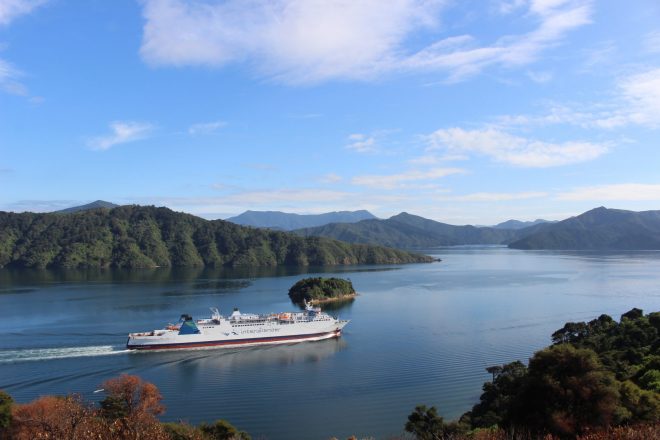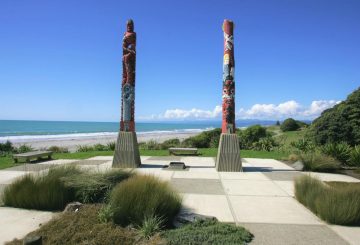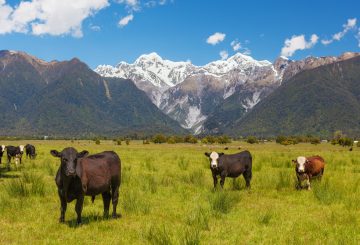Dự án của Kiwirail cho hai phà InterisLander mới đang tiến triển, với việc nhà điều hành ký một thư ý định để họ đóng tại một xưởng đóng tàu Hàn Quốc.
Bức thư là một thỏa thuận không ràng buộc cho phép cả hai bên tiến tới đàm phán hợp đồng chi tiết hơn.
Giám đốc điều hành Kiwirail Greg Miller cho biết quyết định chọn Dockyard Hyundai Mipo, có trụ sở tại thành phố đông nam của Ulsan, đến sau một quá trình tuyển chọn kéo dài năm.
“ Kiwirail đã làm việc chăm chỉ trong việc này kể từ khi tìm kiếm những biểu hiện quan tâm đầu tiên trong tháng Tám năm ngoái,” Miller nói trong một tuyên bố.
Hai chiếc phà mới sẽ thay thế ba chiếc phà Interislander đang già hóa của Kiwirail, đang gần cuối đời.
Các động cơ, hệ thống đẩy, và hệ thống dẫn đường đã được xác định là chủ yếu là Mỹ và châu Âu.
Sau giai đoạn đàm phán kỹ thuật và thương mại, Miller cho biết mục tiêu là để có hợp đồng đóng tàu cuối cùng được ký kết vào giữa năm 2021 và xây dựng các phà được tiến hành vào cuối năm 2022.
Đã hơn 20 năm kể từ khi New Zealand giới thiệu một chiếc phà được xây dựng hoàn toàn mới cho đội tàu của mình.
Giám đốc chương trình tàu Kiwirail Massimo Soprano cho biết quá trình lựa chọn đã có tính cạnh tranh cao.
“ Chúng tôi đã may mắn có những nhà máy đóng tàu chất lượng cao như vậy để lựa chọn. Trong việc đưa HMD tiến tới các cuộc đàm phán chi tiết, chúng tôi biết rằng chúng tôi có một nhà máy đóng tàu có thể cung cấp trên mọi mặt trận: thiết kế, sản xuất, chất lượng và họ có một kỷ lục tốt về giao hàng”, ông nói.
“ Đối với Kiwirail, chất lượng xây dựng là rất quan trọng khi tuyến đường Cook Strait làm việc các phà của chúng tôi khó khăn, và hiệu suất đáng tin cậy trong suốt thời gian 30 năm dự kiến của họ là rất quan trọng.”
Theo Kiwirail, các phà mới sẽ hỗ trợ mục tiêu giảm lượng khí thải carbon xuống 30% vào năm 2030 và trung hòa cacbon vào năm 2050.
Họ sẽ sử dụng các nguồn năng lượng khác nhau nếu có ở New Zealand. Vào ngày một sẽ cung cấp cho hoạt động pin khi lắp và cắm vào nguồn điện cục bộ tại mỗi cổng.
Kết hợp với các nhà ga được nâng cấp tại Waitohi Picton và Wellington, Miller cho biết ông tự tin rằng hành khách sẽ nhận được dịch vụ tốt nhất.
Ông nói: “Chúng tôi đã đạt được tiến bộ tốt với việc thiết kế tái phát triển nhà ga Waitohi Picton, hiện nay chúng tôi đã định cư trên xưởng đóng tàu ưa thích của chúng tôi để tham gia đàm phán cuối cùng và chúng tôi đang tập trung nỗ lực vào việc tái phát triển tại khu vực nhà ga Kaiwharawhara ở Wellington”.
Kiwirail cho biết hãng đóng tàu Hàn Quốc lớn thứ sáu thế giới với nhiều thập kỷ kinh nghiệm đóng tàu phức tạp, bao gồm HMNZS Aotearoa cho Lực lượng Phòng vệ New Zealand.
Chính phủ cam kết 400 triệu USD trong Ngân sách 2020 cho dự án, xây dựng trên một khoản đầu tư 35m USD vào Ngân sách 2019.






























































